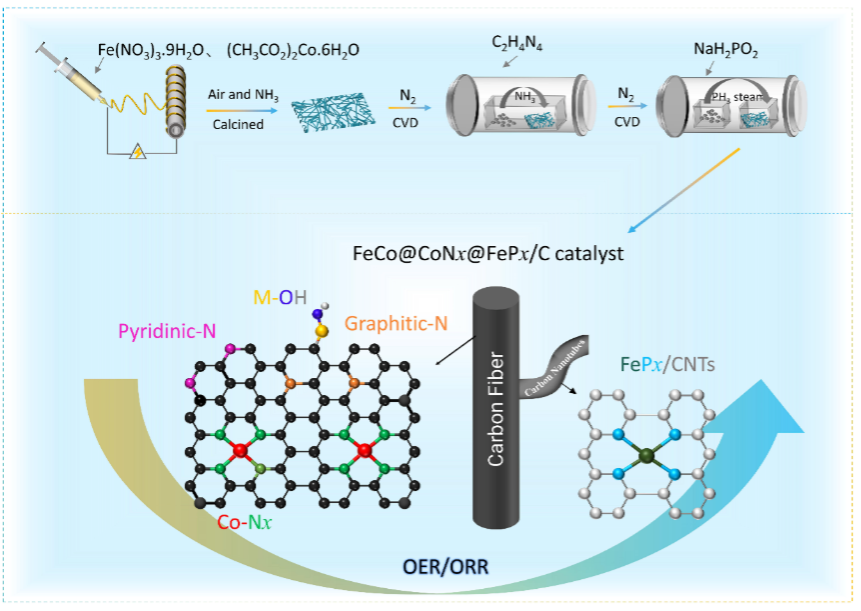Recently, Prof. Xiuting Li from the Institute for Advanced Study at Shenzhen University published a research paper titled " CNTs/CNF-supported multi-active components as highly efficient bifunctional oxygen electrocatalysts and their applications in zinc-air batteries" in the Nano Research. Dr Weiyuan Ding is the first author of the paper.
Rational construction of active components has been the biggest challenge in preparing efficient bifunctional oxygen electrocatalysts. Herein, electrospinning and chemical vapor deposition (CVD) were employed to embed active species including FeCo nanoparticles, MNx (M = Fe, Co), and FePx in porous and graphitized carbon nanotubes (CNTs)/carbon nanofiber (CNF). The as-prepared FeCo@CoNx@FePx/C exhibited a half-wave potential as high as 0.86 V in oxygen reduction reaction (ORR) and low oxygen evolution reaction (OER) overpotential of 368 mV at 10 mA·cm-2, which are superior to Pt/C (0.83 V) and IrO2 (375 mV) respectively. The assembled Zn-air battery (ZAB) showed a high energy efficiency (Edischarge/Echarge) of 65% at 20 mA·cm-2 and stabilized for 700 charge-discharge cycles. The spectroscopic and microscopic characterizations evidenced that the outstanding bifunctionality of the electrocatalyst can be ascribed to three main reasons: First, FeCo nanoparticles are rich in MOH/MOOH active sites for OER, and FePx/CNTs constructed with CVD also modulate electronic structure to improve electron transfer; second, both MNx in carbon matrix and FePx/CNTs are highly active towards ORR; third, the CNTs/CNF are highly porous and graphitized, which promotes mass transport and improves electrical conductivity and stability of the electrocatalysts. This work gives important implications on the design of bifunctional electrocatalysts.
This work was supported by the grants from the National Natural Science Foundation of China, the Project of Education Department of Guangdong.



